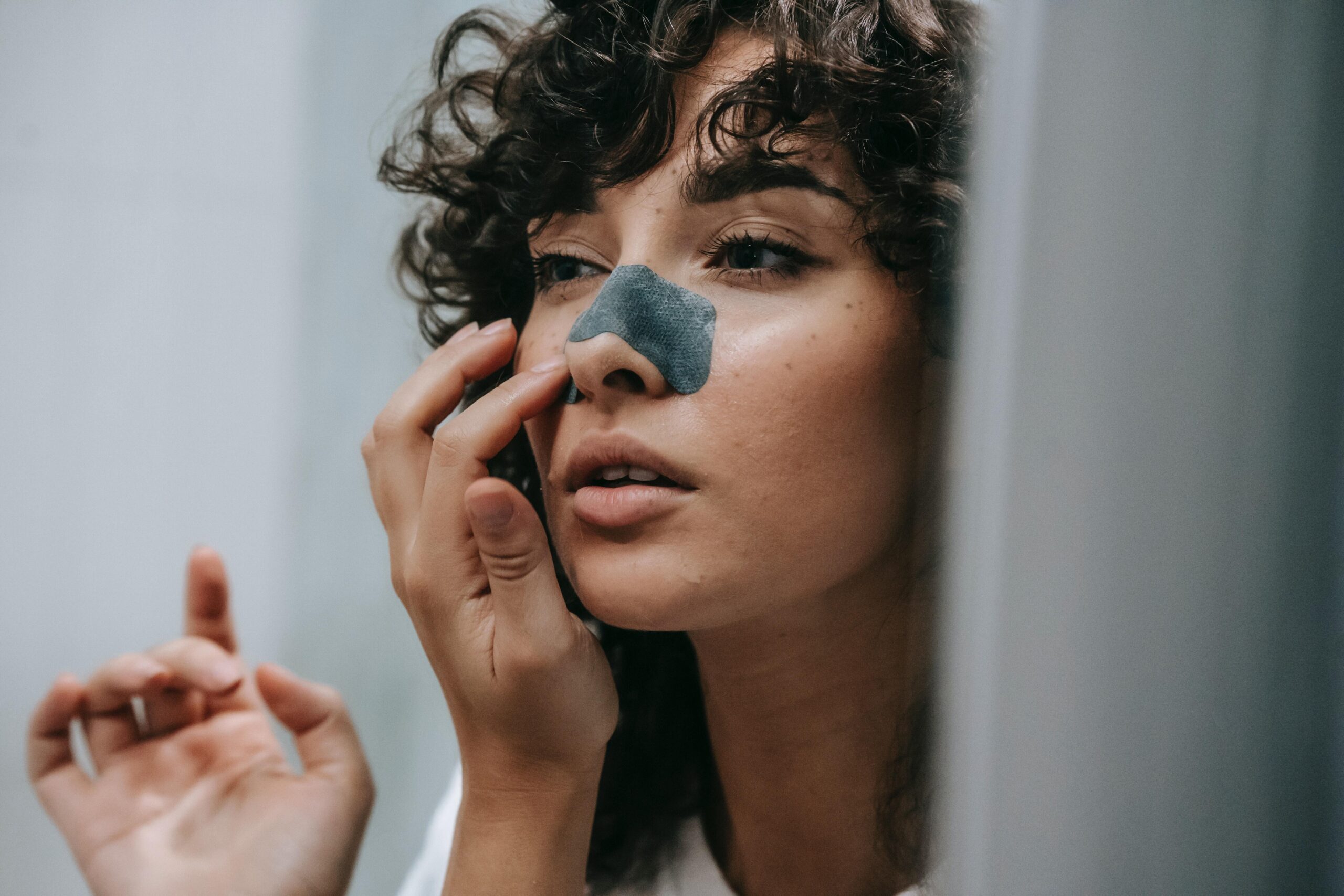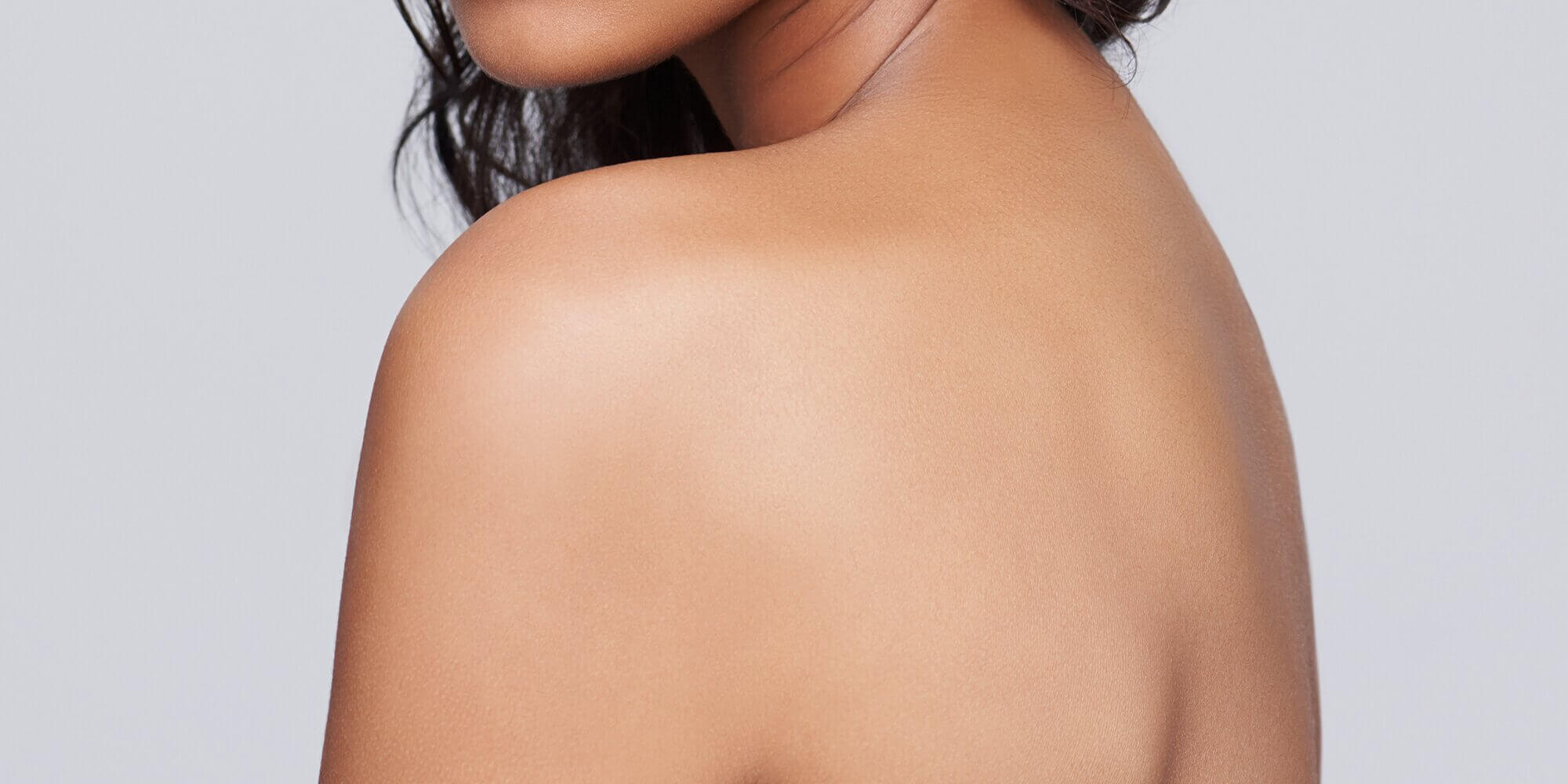Have you ever been sucked down the popping rabbit hole on YouTube? We don’t recommend it. It’s not for the faint of heart. But if you’re okay with watching gross yet admittedly satisfying videos of zit-popping and blackhead removal, then you’ve probably seen photos and videos on skin gritting showing up on your feed.
This next-level blackhead treatment is gaining a whole lot of hype, and we understand why. No matter how many rigorous exfoliation cleansers and blackhead treatments we try, those stubborn little black marks seem to never go away. But online beauty pros from Reddit’s Skincare Addiction and other forums say this new beauty trend is the best way to unclog pores and get your skin glowing.
Skin gritting is actually a multi-step process that requires oil cleansing, the application of a charcoal mask, and a facial skin massage. The combination of oil, charcoal and pressure essentially forces the blackheads out of your skin.
It has mixed reviews, however, with the skincare community totally divided about whether or not it actually works. For every one Reddit user that touts it as a miracle, there’s a vlogger on the fence. If you want to see photos — warning: they’re repulsive — go ahead and give it a Google.
Experimenters from the Reddit thread and Instagram have posted photos of their dislodged blackheads resting on their hands to prove the method’s effectiveness.
How to “Grit” Your Skin, Step by Step
1. Clean Your Face
First thing’s first. Wash away all the top-layer dirt, oil and free radicals from your face with an oil-based cleanser to prep the skin.
If you have oily skin, fret not: using a cleansing oil is actually A-OK for people who tend to have excess moisture, but try to use a cleanser made with botanical oils to avoid increasing oil production. An initial oil cleanse will also help loosen the dirt and debris that lead to clogged pores, effectively allowing the dirt to “slip out” of the skin. Let your skin fully dry before moving on to the next step.
2. Apply a Charcoal or Clay Mask
The charcoal face mask portion of skin gritting is the most important step of the process. According to YouTuber Stephanie Bailey, these masks draw out impurities and toxins from the skin, and essentially help dislodge all those pore-clogging dead skin cells and free radicals that lead to the development of blackheads. Leave your charcoal mask on your face until it completely dries and then wipe it off with warm water and a towel.
3. Rigorously Massage Your Skin
Now the fun begins! Once you’ve fully removed your facial mask and allowed your skin to dry, you’ll want to give your skin a rigorous oil massage using your trusty oil cleanser. Massage the skin in blackhead-prone areas, especially the nose and chin, until you start to seeing them slide out.
Does it Actually Work?
Here’s the thing: there’s some debate going on in the skincare world about the difference between sebaceous filaments and blackheads.
Sebaceous filaments are the small specks on your nose and forehead that form around hair follicles. These filaments are essential to producing oil in the skin, but collect sebum (skin oil) and dead skin which lead to blackheads and pimples. If the black specks on your face are actually sebaceous filaments and not blackheads, you probably won’t get the same results as the beauty bloggers and Reddit users who are promoting this treatment. With that being said, those with actual blackheads have reported a lot of success with gritting.
There’s also some evidence to suggest that the microscopic black marks shown in photos on users’ hands are actually just remnants from the clay mask, and not actual blackheads. So should you go big and grit? We think there’s no harm in giving it a try, especially if you’ve already got a good cleanser and clay mask on hand at home.
But those with sensitive skin should proceed with caution: clay and charcoal masks can be drying and irritating, and aren’t the best choice for people who have dry, red or irritated skin to begin with. Plus, you want to be careful about over-scrubbing or over-exfoliation during the massage portion, as this can dry out your skin and lead to redness and sensitivity.
Dermatologist-Recommended Blackhead Treatments
There are a wide range of scientifically proven blackhead treatments that you can use to address those stubborn black marks. Blackheads develop when a pore becomes clogged with dead skin cells and excess sebum, which is necessary to keeping your skin soft and well-hydrated.
With that in mind, the best blackhead removal treatments should dislodge the debris that is clogging the pores without removing essential moisture. The following options are generally considered safe and highly recommended blackhead treatments.
Salicylic Acid Cleansers
Since many non-prescription pimple- and blackhead zappers now contain a safe amount of salicylic acid, this is an easy way to address these frustrating marks in your day-to-day skincare regimen.
According to the American Academy of Dermatology (ADA), using an over-the-counter cleanser with salicylic acid or benzoyl peroxide can help control blackheads. That’s because these antiseptic agents help to thoroughly unclog the pores and have an excellent ability to penetrate deeply into the skin.
Salicylic Acid Peels
For those recurring blackheads, you may want to consider trying out an in-office chemical peel formulated with pore-cleansing salicylic acid. Your dermatologist, esthetician or skin specialist will administer a peeling agent that effectively strips away the outermost layer of the skin. These peels are not only great for treating acne and blackheads, but can also be used to address fine lines, pigmentation issues, sun damage and melasma.
For more information, make sure to read our guide to over-the-counter vs. professional chemical peels.
Microdermabrasion
This skin treatment, often dubbed “the ultimate exfoliator,” is similar to chemical peels in that it’s meant to remove the outermost layer of the skin. During microdermabrasion, a professional will use a special machine to gently buff away dead skin cells and the top layer of the skin.
The American Society of Plastic Surgeons recommends microdermabrasion as a reliable option for treating blackheads, as well as hyperpigmentation, age spots, fine lines and wrinkles. It may also help to reduce or eliminate large pores.
Retinoids
You may think of prescription and over-the-counter retinoids (Retinol and Tretinoin, for example) strictly as anti-wrinkle treatments. But dermatologists also recommend retinoids for clearing up blackheads.
Retinoids are essentially vitamin A derivatives that help to speed up the skin’s cell turnover rate, which quickly clears pores and treats blackheads. If you have serious blackheads, talk to a board-certified dermatologist about getting on a prescription retinoid like Retin-A, Renova or Refiss.
Micro-Needling
If you don’t have a fear of needles, then you’ll definitely want to consider micro-needling. This is a relatively cost-effective and non-invasive skin treatment that can be performed either in-office by a professional or with at-home micro-needling treatments like a derma roller.
Even people who are a little scared of needles shouldn’t be deterred by the thought of putting needles all over their face with this treatment. Micro-needling uses tiny, 1 to 3-millimeter needles and is relatively painless. The method works by increasing collagen production and encouraging the production of fresh, new skin.
Exfoliation
Using a good-quality facial exfoliator in moderation may be a good way to reduce the appearance of blackheads, according to dermatologists. That’s because it removes deeply-set dead skin cells, excess oils, dirt and debris that can clog the pores.
For a double duty dose of blackhead removing prowess, invest in a good salicylic acid exfoliant with micrograins. Remember: over-exfoliation can do more harm than good when it comes to maintaining healthy, beautiful skin, so proceed with caution. We recommend exfoliating about once a week with gentle products to avoid dryness, excess oil production, breakouts and redness.
The Best Course of Action
At the end of the day, there are plenty more clinically-proven blackhead removal methods on the market that will probably provide a better long-term blackhead solution for your skin type. They may not be as immediately satisfying as gritting, but they’ll keep your skin looking fresh and clean for the long-run so long as you keep up with treatments.
Again, there’s no reason not to give skin gritting a try if you’ve already got a good-quality charcoal mask and oil cleanser in your medicine cabinet, but proceed with caution and don’t expect miracle results. As always, you should speak to a board-certified dermatologist before you try any new skin treatments to ensure that you don’t irritate the skin or worsen acne.









